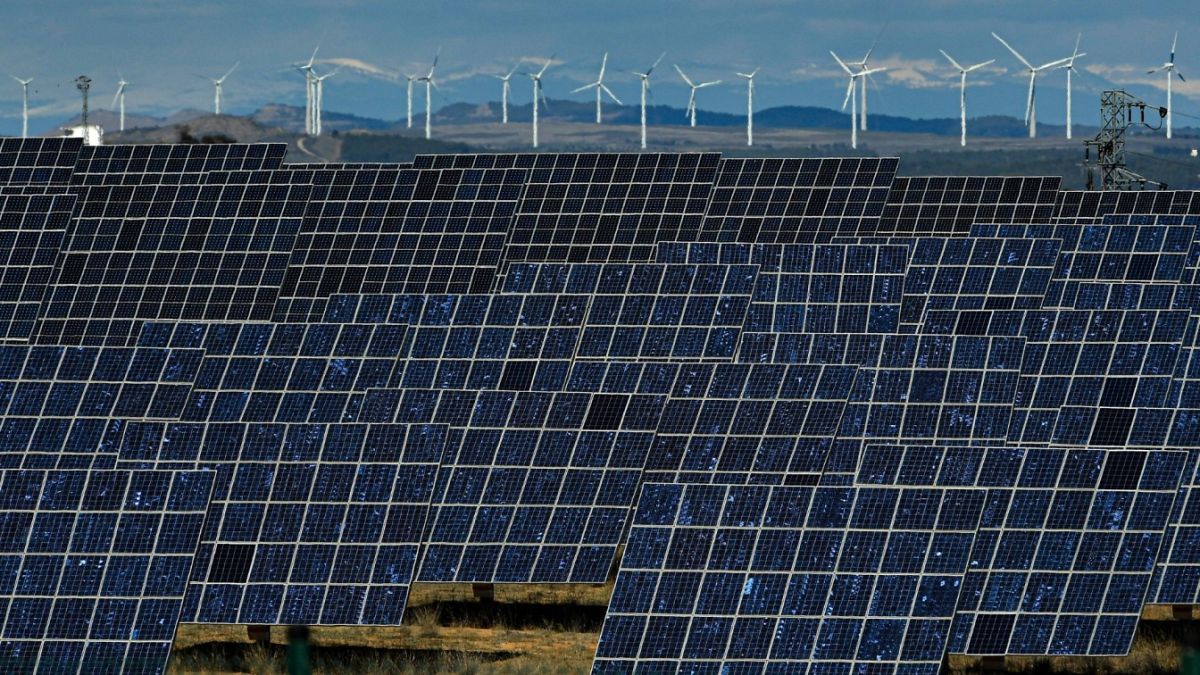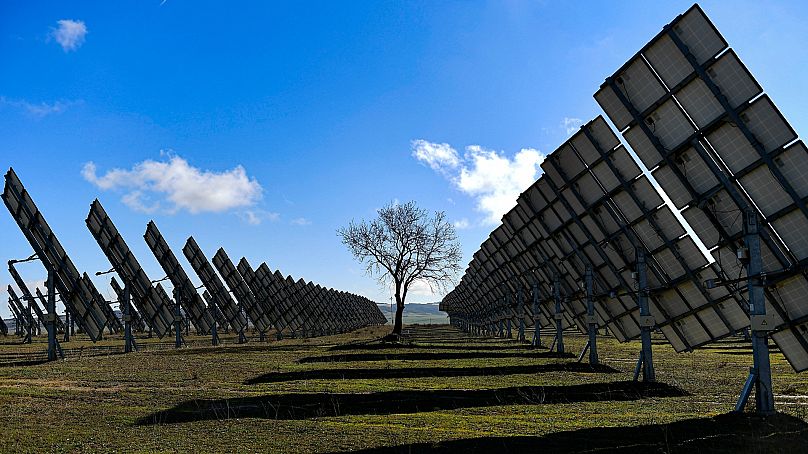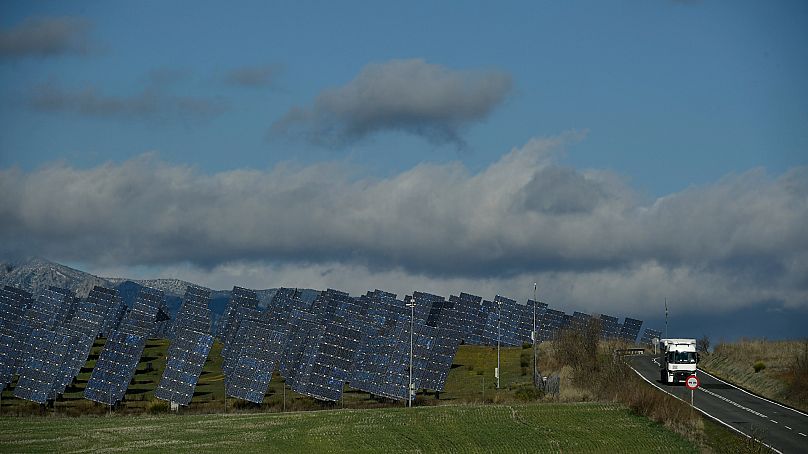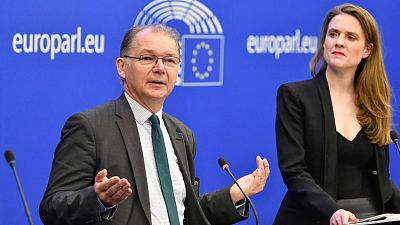But critics warn of risks of entering a ‘hydrogen bubble’.
With an abundance of sun and wind, Spain is positioning itself as Europe’s future leader in green hydrogen production.
But some energy sector experts express caution over ramping up an industry that would be reliant on huge increases in renewable power.
Currently, most hydrogen is produced from fossil fuels. So-called 'green' hydrogen is produced using renewable energy - such as wind, solar and hydropower.
Here's why the EU is doubling down on green hydrogen, how Spain is involved, and why some are critical of this 'fuel of the future'.
Why is green hydrogen production important in Europe?
Since Russia’s invasion of Ukraine, the hydrogen sector has taken on greater importance in Europe.
Russia is the world’s second-largest producer of natural gas, which powers most global hydrogen production. With sanctions in place, the European Union is refocusing on intra-bloc supply chains for its energy needs.
“Renewable energy, including renewable hydrogen, is a central pillar of the REPowerEU Plan, which is the EU’s strategy to get rid of Russian fossil fuels as soon as possible,” says EU Commissioner for Energy Kadri Simson.
As well as bolstering energy security, green hydrogen is important in the EU's push for net zero. By 2030, the bloc is attempting to cut emissions by 55 per cent compared to 1990 levels.
As part of this, it has proposed that the EU produce 10 million tonnes of renewable hydrogen by 2030 and to import 10 million tonnes more.
Spain, France, Germany and Portugal have agreed to build a hydrogen pipeline by 2030 to transport some 2 million tonnes of hydrogen to France annually.
How is green hydrogen made?
Green hydrogen is created when renewable energy sources power an electrical current that runs through water, separating its hydrogen and oxygen molecules through electrolysis.
The process doesn’t produce planet-warming carbon dioxide, but less than 0.1 per cent of global hydrogen production is currently created in this way, according to the IEA.
However, hydrogen is more commonly made in a process called steam-methane reforming. This typically uses methane (CH4) from natural gas. Hydrogen atoms are separated from carbon atoms using high-temperature steam and pressure. 'Grey' hydrogen, carbon monoxide and CO2 are produced in the process.
The separated hydrogen can be used in the production of steel, ammonia and chemical products, all of which require industrial processes that are harder to wean off fossil fuels.
Hydrogen can also be used as a transportation fuel, which could one day transform the highly polluting shipping and aviation sectors.
Why is Spain well positioned to lead in green hydrogen production?
Spain’s large, windswept and sparsely populated territory receives more than 2,500 hours of sunshine on average per year, according to the state weather agency. This provides ideal conditions for wind and solar energy, and therefore green hydrogen production.
The Spanish government announced a Hydrogen Roadmap back in 2020. Spain has already achieved its targets for green hydrogen capacity four times over - the country now has 15.5 gigawatts of capacity versus its original 2030 goal of four gigawatts.
The International Energy Agency (IEA) said in December that Spain would account for half of Europe’s growth in dedicated renewable capacity for hydrogen production.
“If you look at where hydrogen is going to be produced in Europe in the next million years, it's in two countries, Spain and Portugal,” agrees Thierry Lepercq, the founder and president of HyDeal Ambition, an industry platform bringing together 30 companies. “Hydrogen is the new oil.”
Criticism has centred on green hydrogen's higher cost compared with highly-polluting grey hydrogen drawn from natural gas.
Lepercq argues that solar energy produced in Spain is priced low enough to compete. He is working with companies like Spanish gas pipeline corporation Enagas and global steel giant ArcelorMittal to design a model for green hydrogen production, distribution and supply at a competitive price.
Green hydrogen can help cut fossil fuels where electrification isn't viable
While some sectors are increasingly electric, others are harder to crack. Compared with electricity, hydrogen can better deliver the high temperatures required by heavy industry. In sectors like cars and heating, meanwhile, electricity is effective.
For sectors like these, “it’s fundamental to electrify,” says Spain's ecological transition minister, Teresa Ribera. However, she continues, Spain also needs to cut fossil fuels for “end uses for which electricity is not so simple.”
Globally, Lepercq says, “Electricity, power, is 20 per cent of energy consumption. What about the 80 per cent that is not electrified?... You need to replace those fossil fuels. Not in 50 years time. You need to replace them now.”
His green hydrogen company HyDeal aims to replace high-emitting processes like using coking coal and blast furnaces in steel manufacturing, and natural gas in ammonia production for fertilisers. It must first build solar farms and electrolysers in northern Spain, joining other green hydrogen plants recently inaugurated in central Spain and Mallorca.
Why are some people critical of Europe's push for green hydrogen?
A huge amount of extra renewable power generation will be required to build a green hydrogen future. The IEA says the world will need 50 gigawatts of renewable capacity dedicated to green hydrogen production by 2027 - a 100-fold increase.
Minister Ribera knows green hydrogen requires an upfront investment that will only pay off in the long term. Slashing emissions “needs an initial stage that can be covered with renewable energies,” she says
Some industry experts argue the push for green hydrogen is the wrong focus at a delicate tipping point for renewables following the fallout of the Ukraine war for the energy sector.
“In Europe in particular, there’s been a huge push for hydrogen, which in my point of view is unjustifiable,” says Antonella Battaglini, CEO of the Renewables Grid Initiative. The EU target of 20 million tonnes of green hydrogen by 2030 requires electricity “that we don’t have the renewable resources to produce,” she adds.
Current demand for hydrogen far outstrips the EU's planned supply, Battaglini argues, posing “the risk that we are driven away from direct electrification into a hydrogen bubble.”
Experts like Battaglini fear that companies could argue that when sufficient renewable power isn't available, they will need to keep relying on fossil fuels.
“There could be a very high cost. In economic terms, but also in environmental terms. You may end up with higher emissions than you have today,” she says.





